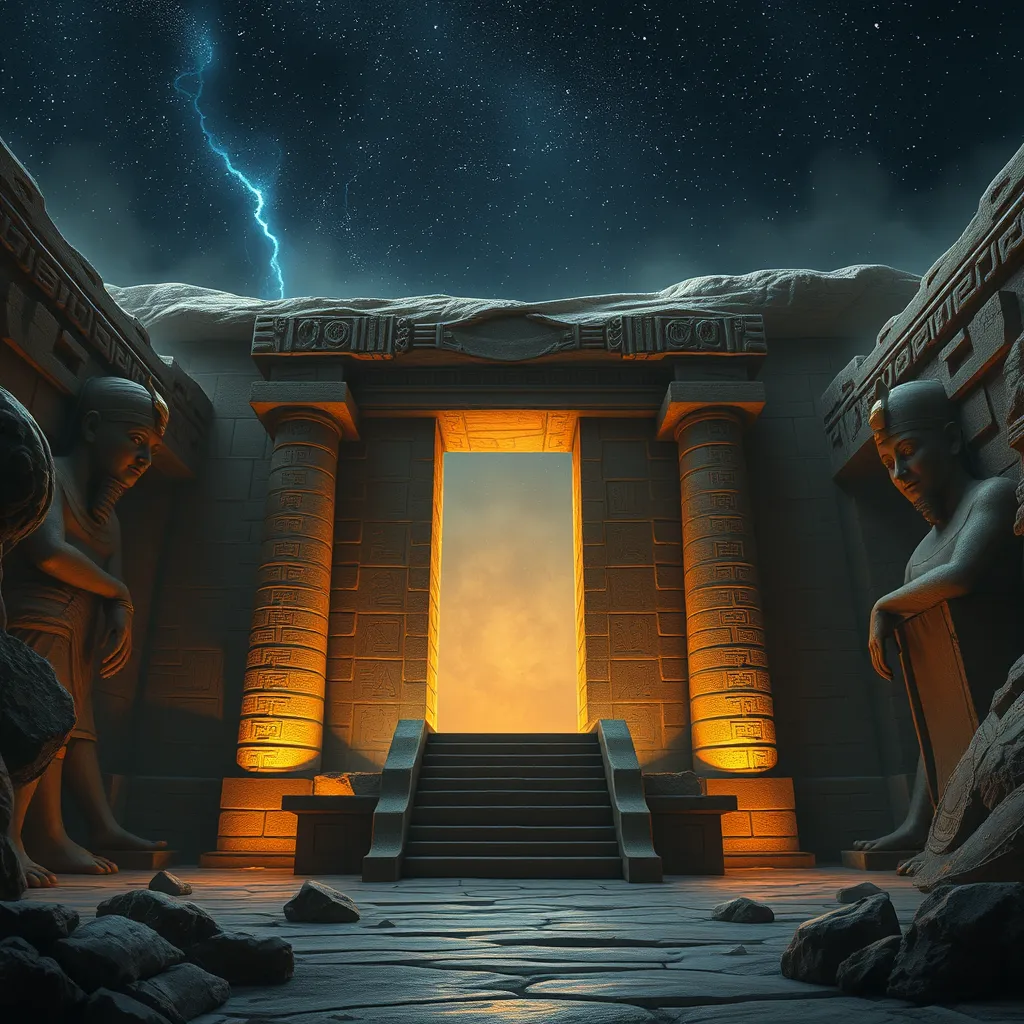The Duat: Your Guide to the Underworld
I. Introduction to the Duat
The Duat, often translated as the “underworld” or “realm of the dead,” plays a crucial role in ancient Egyptian belief systems. It is not merely a place of darkness and despair but a complex realm where the souls of the deceased undergo transformations and trials. The Duat embodies the Egyptians’ understanding of death and the afterlife, reflecting their beliefs about eternity, judgment, and rebirth.
The significance of the Duat lies in its representation of the journey that every soul must undertake after death. It is a place of both peril and opportunity, with the potential for a soul to achieve immortality by successfully navigating its challenges.
II. The Cosmology of the Duat
The Duat is not a singular location but rather a vast and intricate realm that encompasses various landscapes, realms, and domains. Its structure is often depicted as a labyrinthine journey that the deceased must navigate.
A. Structure and geography of the Duat
Ancient texts and illustrations describe the Duat as a place filled with rivers, lakes, and deserts, often characterized by:
- Waterways that represent barriers to be crossed
- Fields of reeds symbolizing renewal
- Caverns and dark places that signify trials
B. Key realms and locations within the underworld
Within the Duat, there are several important locations, including:
- Hall of Ma’at: The central location for the judgment of souls.
- Field of Reeds: A paradise where worthy souls may dwell in peace.
- Lake of Fire: A place of punishment for the unworthy.
III. Deities of the Duat
The Duat is inhabited by various deities who play essential roles in the afterlife journey. These gods and goddesses guide, protect, and judge the souls of the deceased.
A. Major gods and goddesses associated with the Duat
Some of the most notable deities include:
- Osiris: The god of the afterlife and resurrection, overseeing the judgment of souls.
- Anubis: The jackal-headed god responsible for mummification and guiding souls to the afterlife.
- Thoth: The god of wisdom and writing, who records the outcome of the judgment.
B. Their roles and functions in guiding souls
Each deity has a specific role:
- Osiris judges the dead, determining their fate.
- Anubis prepares the soul for its journey and ensures it reaches its destination safely.
- Thoth assists in the weighing of the heart against the feather of Ma’at.
IV. The Journey Through the Duat
The journey through the Duat is a central theme in Egyptian mythology, depicting the trials that souls must face after death.
A. The process of dying and entering the Duat
Upon death, the soul is believed to leave the body and face a series of challenges. The first step is the journey through the Duat, where the soul must navigate various obstacles and confront its past deeds.
B. Key trials and challenges faced by souls
In the Duat, souls encounter numerous trials, including:
- Confrontations with monstrous beings
- Tests of knowledge and wisdom
- The weighing of the heart against Ma’at’s feather to determine worthiness
V. The Importance of the Book of the Dead
The Book of the Dead is a collection of spells and texts designed to assist the deceased in navigating the Duat and achieving a favorable judgment.
A. Overview of the text and its significance
This ancient manuscript served as a guide, providing instructions, spells, and prayers to protect and empower the soul during its journey.
B. Key spells and rituals for navigating the Duat
Included in the Book of the Dead are vital spells such as:
- Spell 125: The Weighing of the Heart
- Spell 30B: The Protection of Anubis
- Spell 17: The Journey through the Duat
VI. Symbolism and Art in the Duat
The Duat has been a prevalent theme in ancient Egyptian art, reflecting the culture’s views on death and the afterlife.
A. Representation of the Duat in ancient Egyptian art
Pyramids, tombs, and burial artifacts often feature intricate depictions of the Duat, showcasing its various landscapes and deities.
B. Symbolic meanings behind various elements of the Duat
The elements within the Duat are rich in symbolism:
- Water represents life and rebirth.
- Darkness signifies the unknown and the trials that must be faced.
- Reeds symbolize the potential for renewal and paradise.
VII. Modern Interpretations and Influences
Today, the Duat continues to inspire contemporary culture, media, and scholarly research.
A. The Duat in contemporary culture and media
From literature to films, the Duat has been depicted in various ways, often representing themes of life, death, and resurrection.
B. Continued fascination and scholarly research
Modern scholars continue to explore the complexities of the Duat, aiming to unravel its many layers and significance in ancient Egyptian society.
VIII. Conclusion
In summary, the Duat is a fascinating and multifaceted aspect of ancient Egyptian mythology. Its significance extends beyond the realm of the dead, influencing beliefs about life, morality, and the cosmos. As we explore the intricacies of the Duat, we gain deeper insights into the values and beliefs that shaped one of history’s most enduring civilizations.
For those intrigued by the mysteries of the Duat and Egyptian mythology, there remains much to uncover. The stories, symbols, and teachings of the Duat invite us to delve deeper into the rich tapestry of ancient beliefs and their relevance to our understanding of life and death today.




